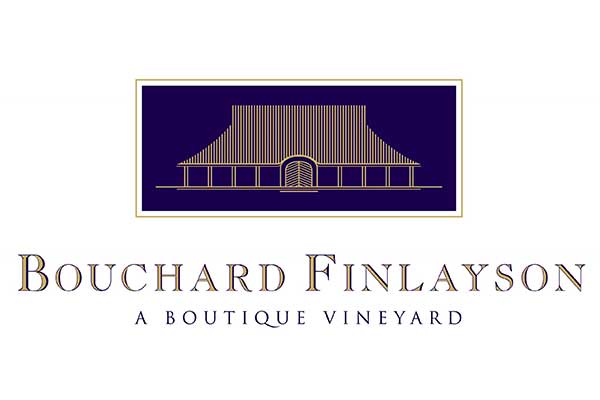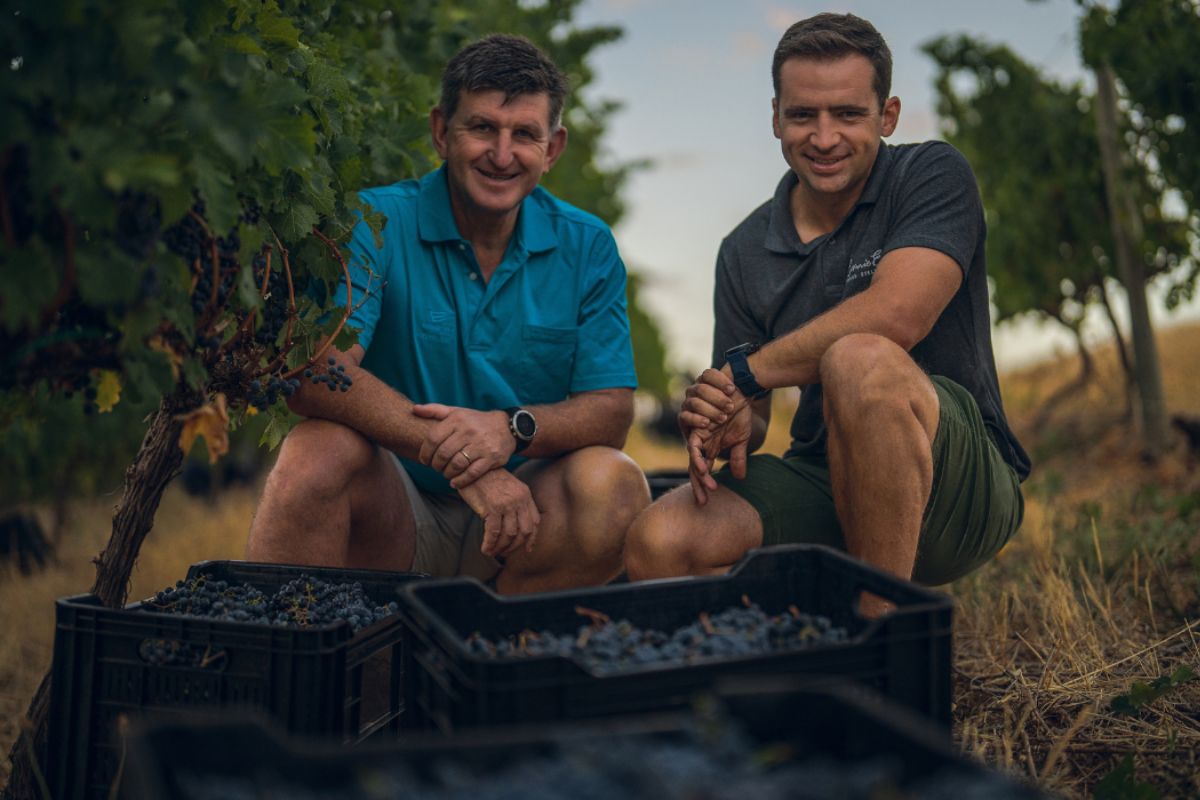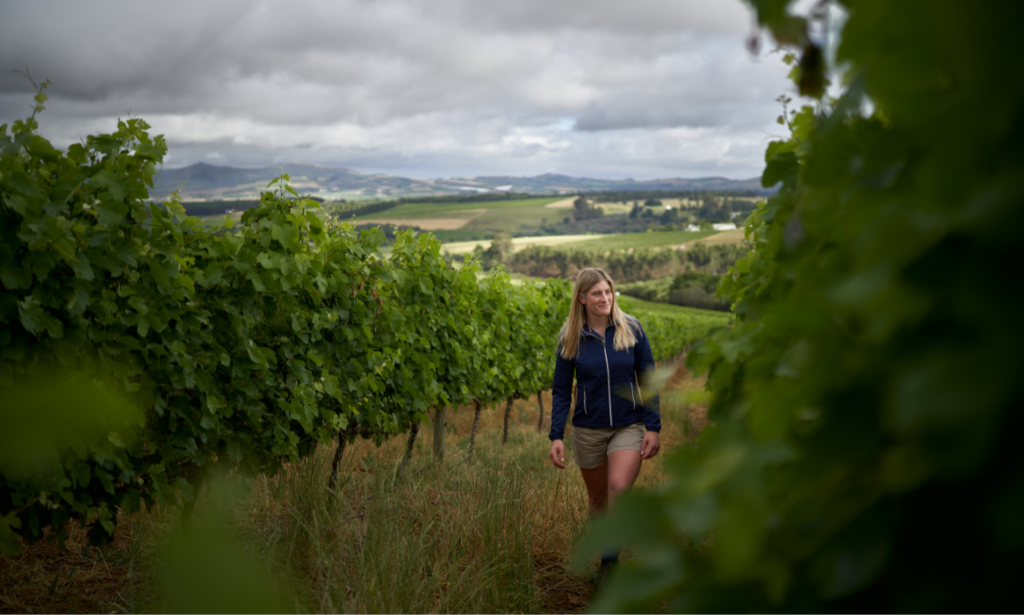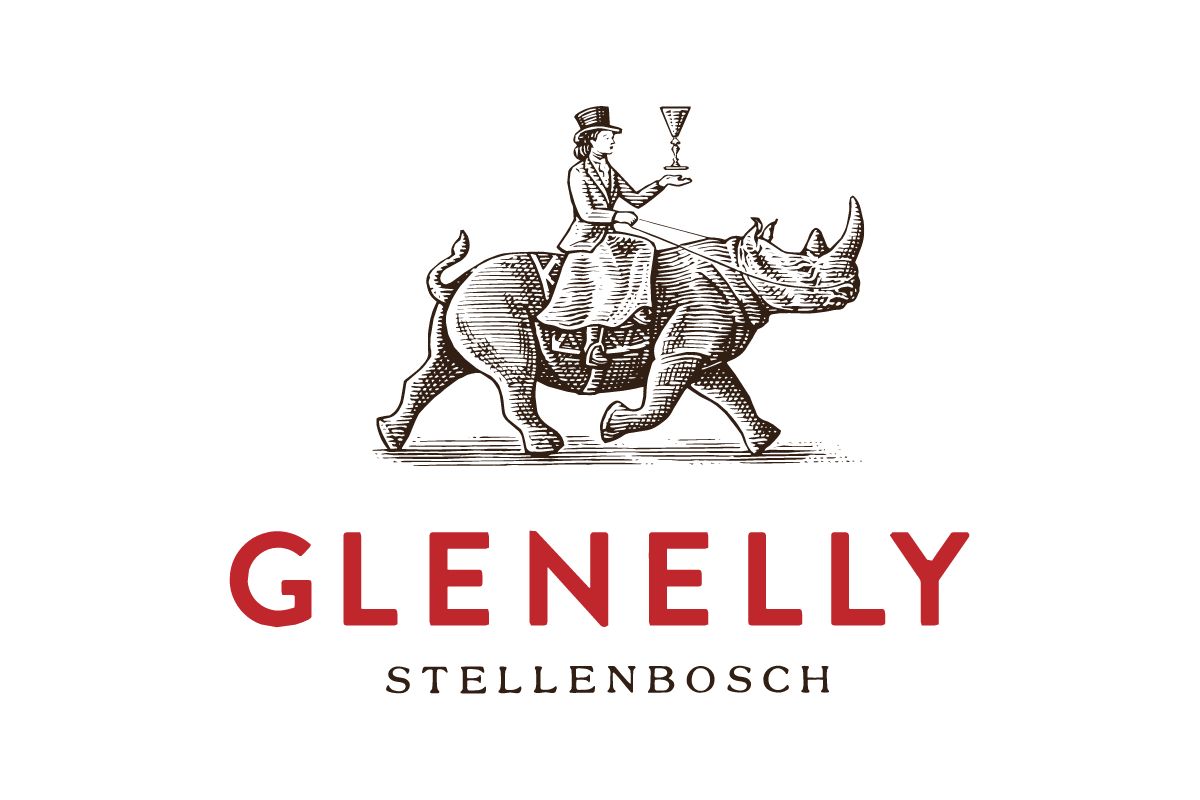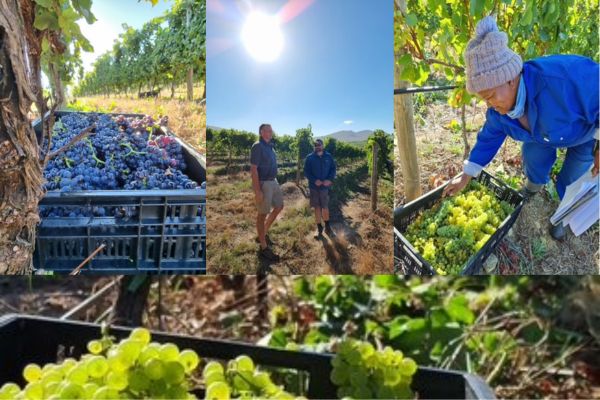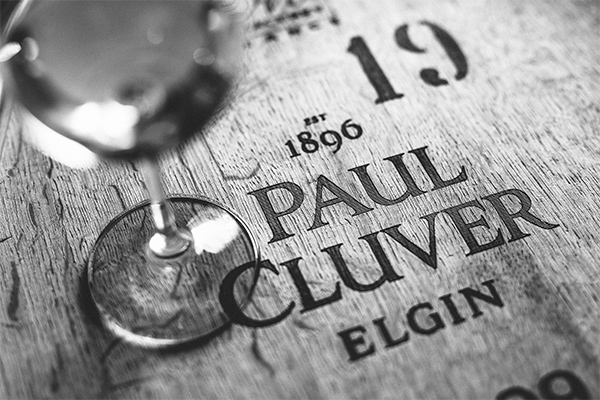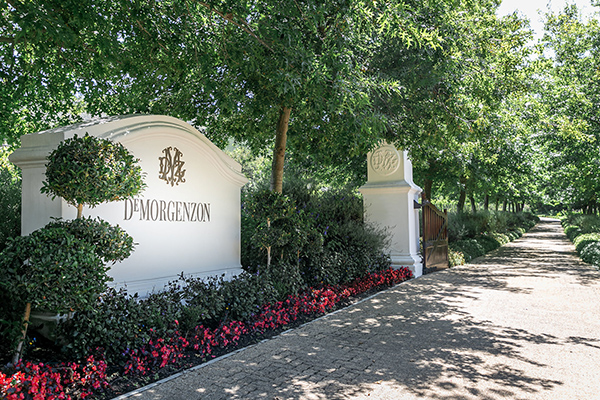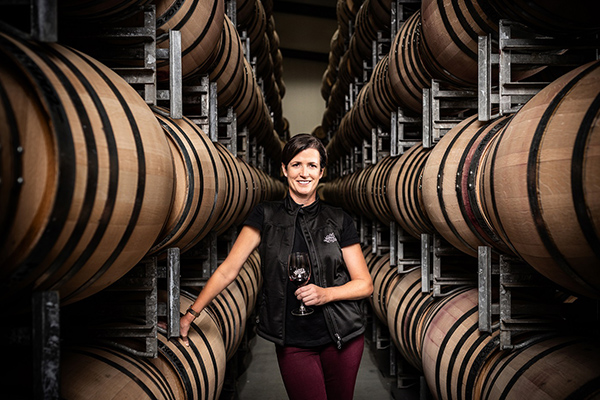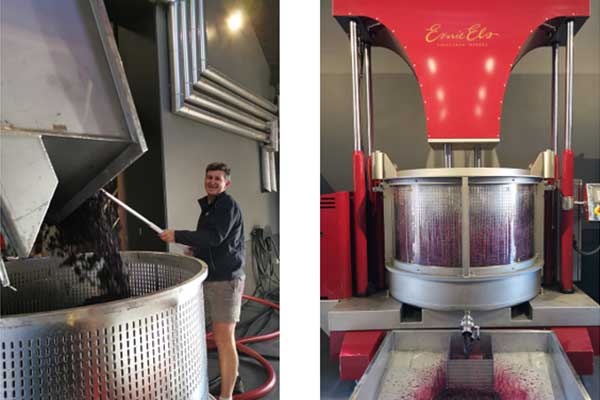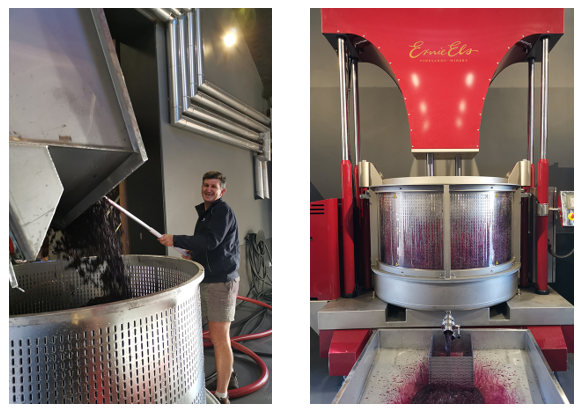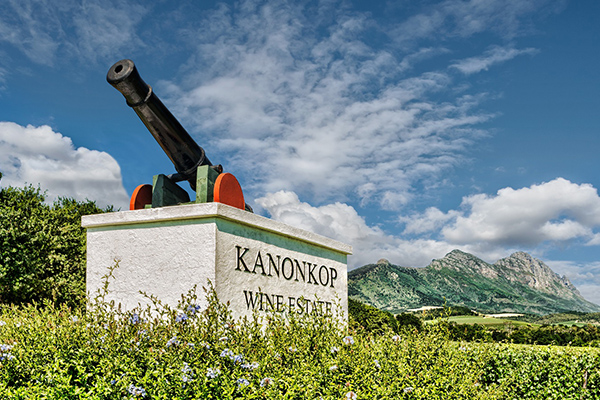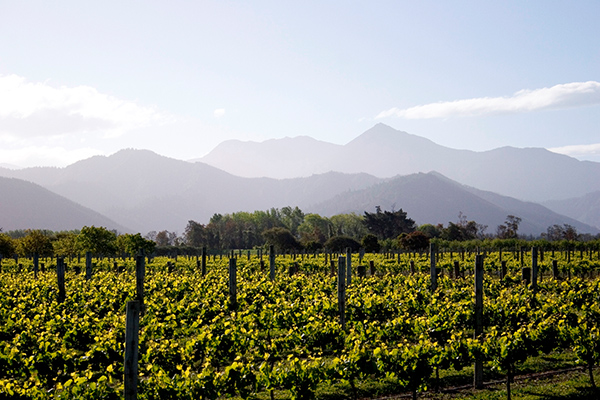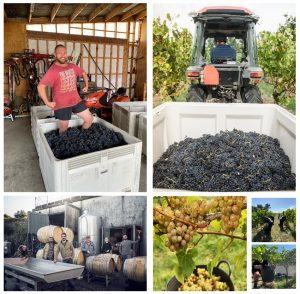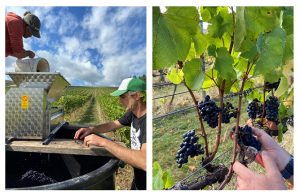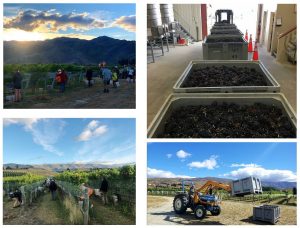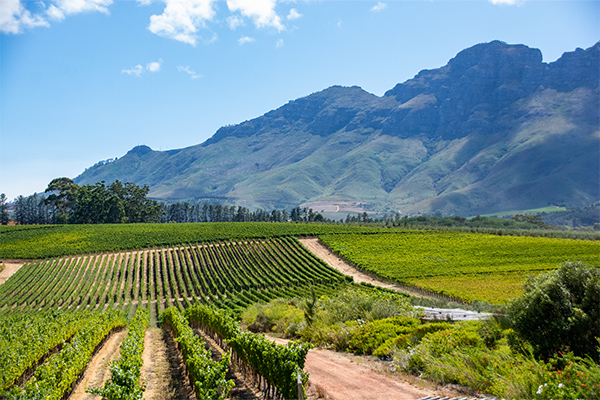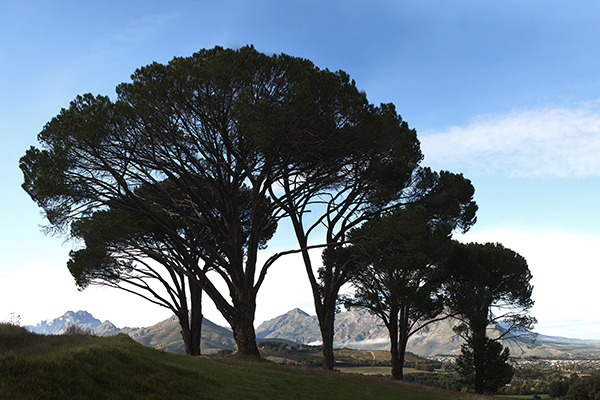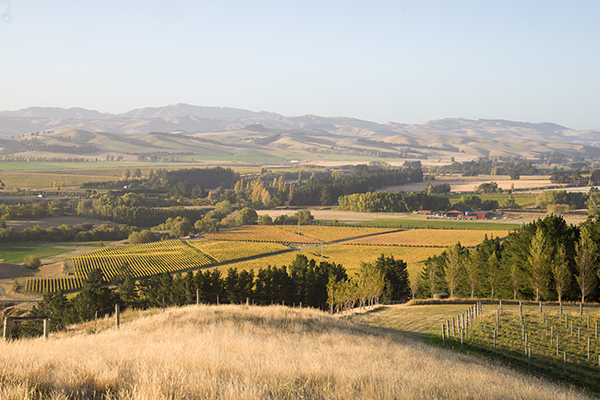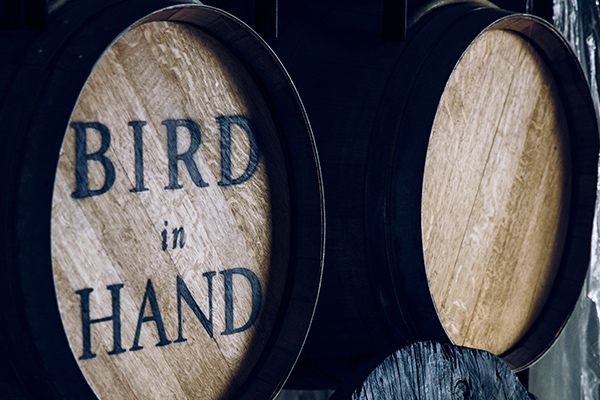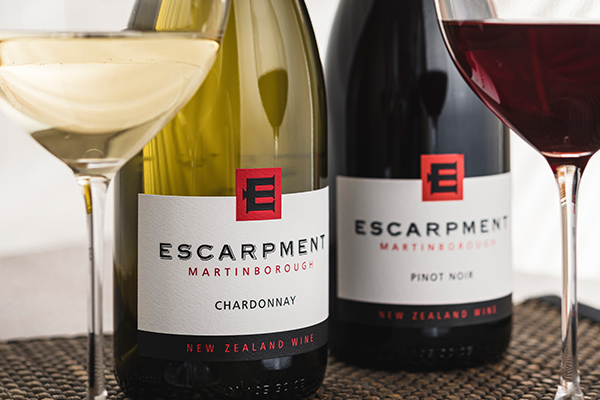DeMorgenzon Cellar Master Adam Mason has given us his thoughts and impressions about the 2021 vintage in general, and insights into how the wines are developing:
According to local data there have only been 4 vintages since 1979 in which our valley’s harvest commenced after the 12th February: 1979, 1997, 2014 and 2021. Given the increasingly early harvests over the last 6 years, one would be mistaken for thinking 2021 constitutes a late harvest, but speaking to the established farmers in the area, it is not so much a late harvest as a normal one.
Including 2015, the 6 vintages before 2021 have all been marked by early ripening, most probably associated with the accumulated stress effects of lower rainfall, earlier budburst in spring and warmer temperatures (in some but not all the years).
Solid winter rainfall in 2020 resulted in the Western Cape’s storage dams overflowing for the first time since 2014. Coupled with cold weather early into spring the wet, cold soils resulted in a delayed budburst shifting the ripening dates out by about 2 weeks on average.
This being my first vintage at DeMorgenzon, I relied on the knowledge and experience of our viticulturist Danie De Waal to weigh in on picking decisions. His knowledge of the terrain, each block’s history, and interpretation of each block’s ripening tempo was instrumental in making the best call.
Despite my eagerness to get to grips with DeMorgenzon’s grapes, Mother Nature had other plans and I had to be content to wait the additional couple of weeks for the fun to start. We settled into a steady rhythm soon enough, and below are some of my thoughts on the results of our endeavours…
Chardonnay
There are five Chardonnay vineyards on DeMorgenzon. Our Reserve blocks are fully south-facing and offer the very best of a cool site in an otherwise warm viticultural environment. These low-yielding sites provide rich wines with good acidity and limey freshness. The fermentations are not inoculated with commercial yeast, and as a result the fermentation tempo is very slow, particularly as the wines approach dryness. I am happy with the complexity and freshness these Reserve blocks are showing but look forward to tasting them once they are completely dry.
The remaining three vineyards are on differing sites and offer slightly riper expressions of Chardonnay- more in the ripe peach, floral spectrum compared to the limey mineral quality offered by the Reserves. They will be bottled as DMZ Chardonnay.
We fermented these blocks in a combination of foudre, barrel and tank, using spontaneous fermentation for all but one of the tanks, and a few batches have gone through malolactic fermentation already. Given the high acidity this year in the earlier picked blocks, I believe the wines will age very well, growing in complexity as they do.
First impressions of this year’s Chardonnay quality are encouraging. I expect to bottle both Reserve and DMZ Chardonnays of balance, clearly displaying classic qualities of freshness, elegance, and length.
Chenin Blanc
With 11 separate Chenin Blanc vineyards planted on DeMorgenzon, this variety offers by far the most comprehensive insight into our various terroirs.
Our oldest vineyard, established in 1972, forms the core of the Reserve Chenin Blanc, and in great vintages we bottle the very best portion as DIVAS Chenin Blanc.
Reserve blocks were all whole bunch pressed and settled overnight without the use of enzymes. The following day they were racked to a selection of new and used 300L, 500L barrels as well as 3200L foudres where fermentation began spontaneously, and for the most part has progressed to dryness. Texture and finesse are the two things that come to mind as I think of the 2021 Reserve Chenin Blanc components. As one would expect, there is a fine thread of acidity throughout these wines, and at this stage I feel we have some excellent parcels in barrel.
Our winemaking approach for the DMZ blocks (essentially the younger, slightly more productive vineyards) differed only slightly from the Reserves in that there was no whole bunch pressing, and the destemmed, crushed fruit was sent not only to barrel for fermentation, but to stainless steel tanks too.
A recent tasting of a rough blend of the 2021 DMZ Chenin Blanc is exciting! The wine shows wonderfully succulent nectarine flavours, with tangy acidity and delicious length. By comparison, the Reserve components are tightly wound, which I believe to be a good thing, as we want these wines to evolve slowly once they are cellared.
Syrah
Syrah ranks by volume as our largest production of red wine. We have four vineyards ranging from one of the very highest on the property (a delightful echelat style block), one lower down, but still relatively cool slope, and two on gravel type soils on the warmer, northerly slopes.
We kicked off the Syrah campaign with expressly cultivated grapes for our Rosé programme. These were destemmed and crushed before pressing in our pneumatic bag press and further cold fermentation in stainless steel tanks.
Our Reserve Syrah is blended each year from the very best demarcations of each block, which are then separately fermented and assessed for their quality. This year we fermented three parcels in small stainless-steel tanks, using 20% whole bunch additions to provide additional texture and fruit character.
For the DMZ components, once the grapes were destemmed, rather than pumping the mash, the whole berries were gravity fed into the fermentation tanks using small satellite tanks to ensure the integrity of the grapes. None of these fermentations received the whole bunch treatment, although we did incorporate a small addition of Viognier for its well-known effects on the mouthfeel of Syrah when used this way…
The wines made from Syrah this year are exceptional in my opinion. Each vineyard expresses its own unique character but regardless of site, each displays dark colour, svelte texture, and a great depth of flavour.
